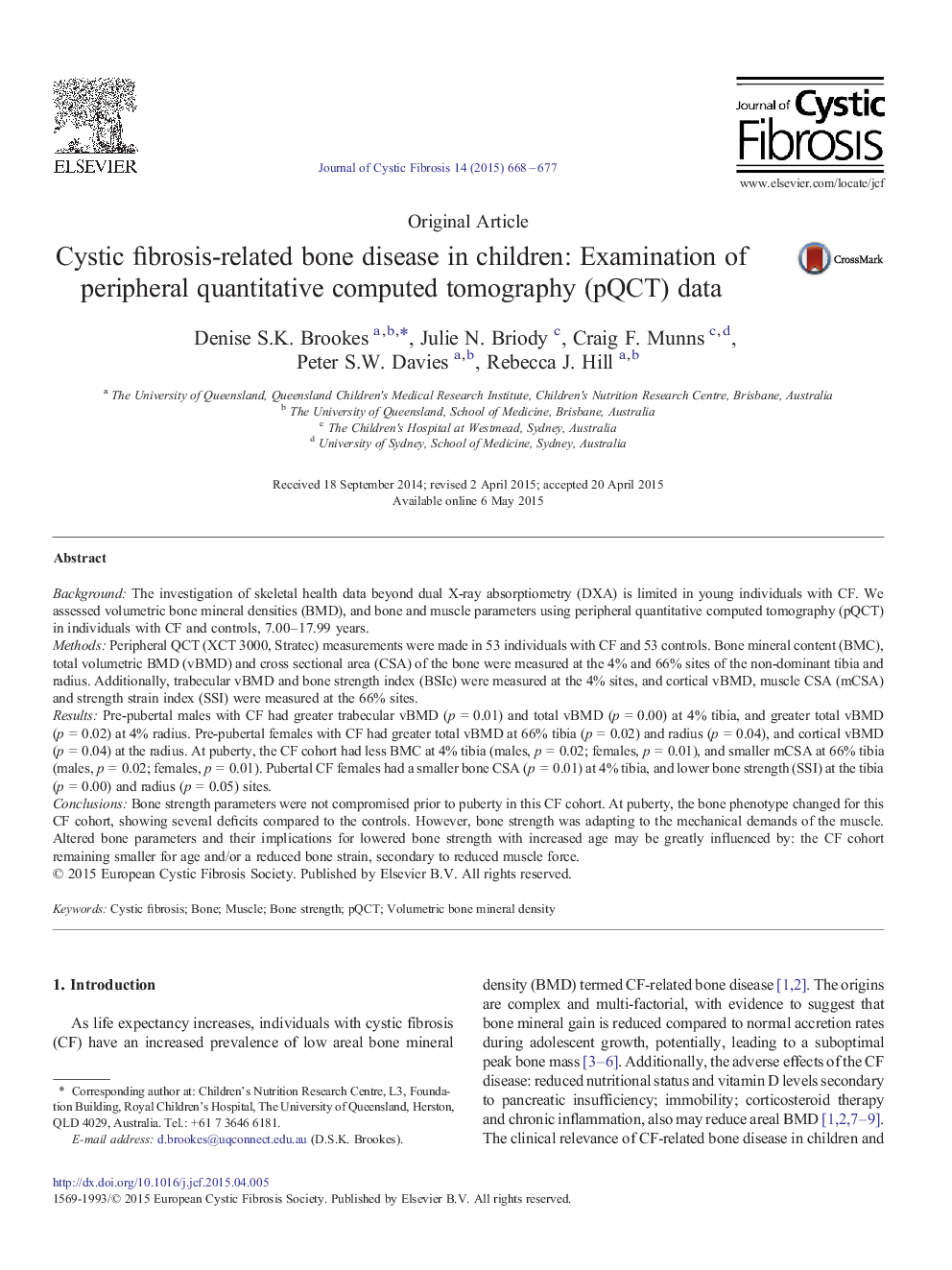| کد مقاله | کد نشریه | سال انتشار | مقاله انگلیسی | نسخه تمام متن |
|---|---|---|---|---|
| 4208099 | 1280427 | 2015 | 10 صفحه PDF | دانلود رایگان |

BackgroundThe investigation of skeletal health data beyond dual X-ray absorptiometry (DXA) is limited in young individuals with CF. We assessed volumetric bone mineral densities (BMD), and bone and muscle parameters using peripheral quantitative computed tomography (pQCT) in individuals with CF and controls, 7.00–17.99 years.MethodsPeripheral QCT (XCT 3000, Stratec) measurements were made in 53 individuals with CF and 53 controls. Bone mineral content (BMC), total volumetric BMD (vBMD) and cross sectional area (CSA) of the bone were measured at the 4% and 66% sites of the non-dominant tibia and radius. Additionally, trabecular vBMD and bone strength index (BSIc) were measured at the 4% sites, and cortical vBMD, muscle CSA (mCSA) and strength strain index (SSI) were measured at the 66% sites.ResultsPre-pubertal males with CF had greater trabecular vBMD (p = 0.01) and total vBMD (p = 0.00) at 4% tibia, and greater total vBMD (p = 0.02) at 4% radius. Pre-pubertal females with CF had greater total vBMD at 66% tibia (p = 0.02) and radius (p = 0.04), and cortical vBMD (p = 0.04) at the radius. At puberty, the CF cohort had less BMC at 4% tibia (males, p = 0.02; females, p = 0.01), and smaller mCSA at 66% tibia (males, p = 0.02; females, p = 0.01). Pubertal CF females had a smaller bone CSA (p = 0.01) at 4% tibia, and lower bone strength (SSI) at the tibia (p = 0.00) and radius (p = 0.05) sites.ConclusionsBone strength parameters were not compromised prior to puberty in this CF cohort. At puberty, the bone phenotype changed for this CF cohort, showing several deficits compared to the controls. However, bone strength was adapting to the mechanical demands of the muscle. Altered bone parameters and their implications for lowered bone strength with increased age may be greatly influenced by: the CF cohort remaining smaller for age and/or a reduced bone strain, secondary to reduced muscle force.
Journal: Journal of Cystic Fibrosis - Volume 14, Issue 5, September 2015, Pages 668–677